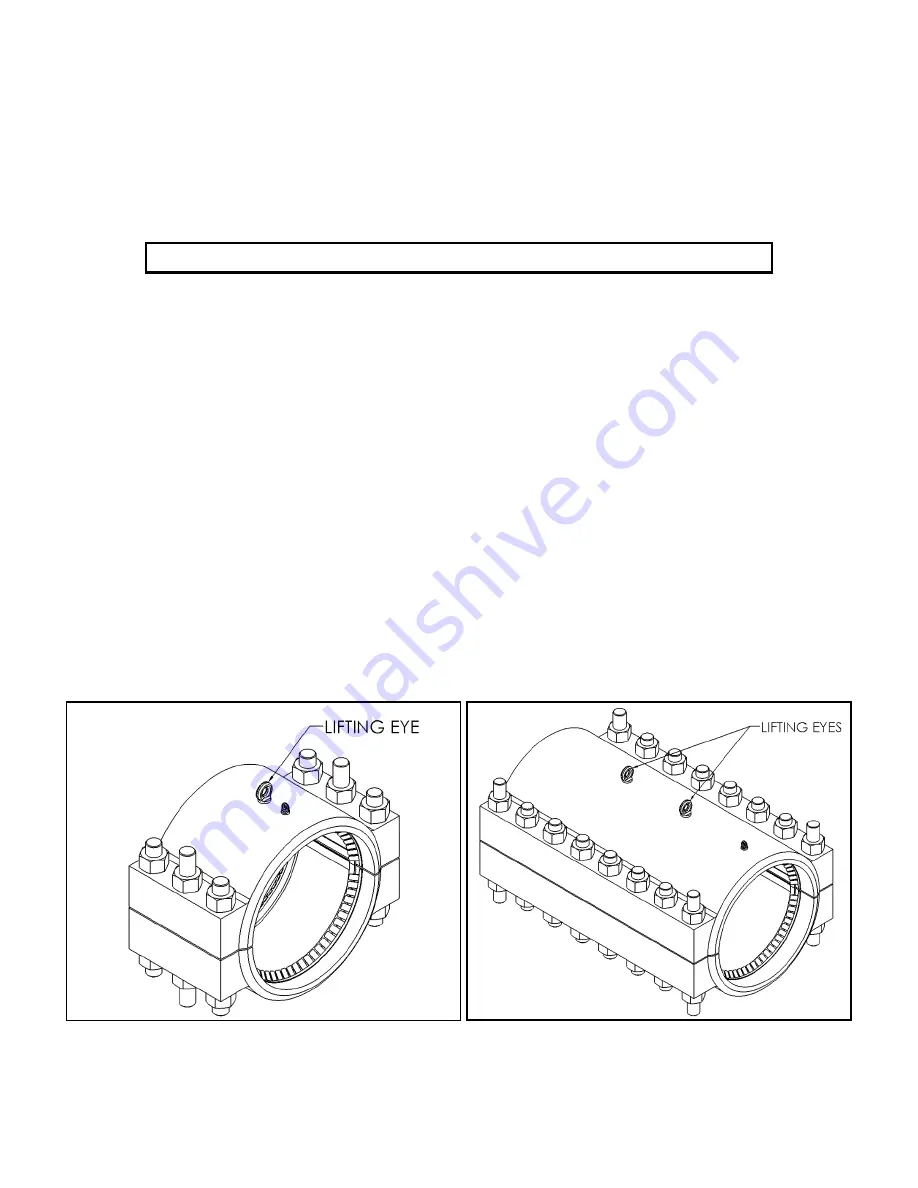
IP-010
Page
3
of
13
Revision 3
5.
A PLIDCO Clamp+Sleeve is capable of sealing on out-of-round pipe up to approximately 5% ovality.
This is based on the ability of the bolting to reshape the pipe. For very thick wall pipe the bolting
may not be able to reshape the pipe. Badly out-of-round pipe may require a different length PLIDCO
Clamp+Sleeve to ensure the circumferential seal are positioned on round pipe.
6.
A PLIDCO Clamp+Sleeve is not capable of reshaping flattened or dented pipe.
Lifting & Handling
When not being moved or transported on a pallet, PLIDCO Clamp+Sleeves should always be lifted,
transported, or installed using the installed lifting eyes as shown in Figures 2 & 3. All Clamp+Sleeves
that exceed 50 lbs. per half or are too heavy to move and install by hand are provided with lifting eyes
on each half. Longer fittings are provided with two lifting eyes as shown in Figure 3. If two lifting eyes
per half are provided, both lifting eyes are required to lift the fitting. Chains, hooks, shackles, or straps
suitable for the weight of the fitting(s) shall be used, and must be securely inserted through the lifting
eyes.
The lifting eyes are designed to support the weight of a fully assembled Clamp+Sleeve. The lifting eyes
are installed on both halves of the fitting, and should be used to maneuver or lower Clamp+Sleeve onto
the pipeline.
Vertical installations or installations that require special rigging due to space, obstructions, or location
may require additional lifting eyes to be added in locations other than shown in Figures 2 & 3. These
can be added prior to ordering or sent back to a PLIDCO manufacturing facility to be added by PLIDCO
personnel.
Note: Careless handling can damage the seals and GirderRings (seal retainers). Lifting devices such as
chains, cables, or straps should never contact the seals or GirderRings. Never lift the fitting by
inserting the forks from a fork lift inside of the fitting. Contact on the seals or GirderRings can result
in the seals being pulled from their grooves. (See Figure 4)
Figure 2 Figure 3

































